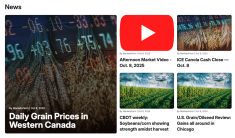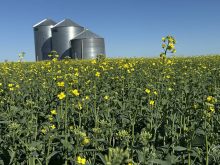Editor’s note: This is the second of a series of columns looking at the lessons learned from the financial crisis of 2008.
David Derwin doesn’t have trouble remembering where he was and what he was doing as the financial world fell apart.
“I was in the hospital, trying to keep an eye on what was going on with Bloomberg TV and on my phone, while welcoming my son into the world,” Derwin, an investment manager and adviser with P.I. Financial in Winnipeg, told me.
Read Also

Huge Black Sea flax crop to provide stiff competition
Russia and Kazakhstan harvested huge flax crops and will be providing stiff competition in China and the EU.
His son was born on October 8, 2008 in the peak of the stock market crash that threatened to create another Great Depression.
For the sake of his clients, which include many farmers, these weren’t markets he could afford to ignore, no matter what was going on in his life. It was an intense period.
Other stories in this series:
- Remembering the lessons from the 2008 financial crisis
- Knowing your lender when times get rough pays dividends
- Manage farms like low-margin, high-volume businesses
- 2008 crisis showed importance of interest rates
- Farmers can learn lessons from 2008 financial crisis
- Financial crisis of 2008 helped test market theories
His colleague Ken Ball, a broker with P.I. Financial, had seen some wild moves in the futures markets all year, and had been counselling caution, especially to farmers. Futures positions were looking risky.
“You had to move extremely fast,” he recalled.
“But most people aren’t traders. They’re farmers. For most people those are markets to be avoided. Just take advantage of the better cash market prices.”
Both Ball and Derwin had seen traders and clients hit by the volatility. For those who used futures to hedge crop prices as they soared that year, including Minneapolis hard red spring wheat as it rose towards a peak over US $20 per bushel, there had been some ugly margin calls.
“You’d have margin calls of tens of thousands of dollars,” said Ball.
“To hedge in that environment on the way up was extremely difficult.”
Not only did people who had sold futures get hit with margin calls, but the cash market was diverging sharply from futures prices, weakening the usual close relationship that makes most futures sales relatively safe if backed by physical crop in the bin.
“On the way up everybody had to get out of their hedges,” said Ball.
That included major players like the Canadian Wheat Board and Cargill, which had hedged future sales and got squeezed hard. Some small grain companies were ruined by the situation.
There are lots of lessons from the financial crisis, but for farmers one of the most useful is the value of options to lock in profits while avoiding the pitfalls of volatility.
“A very simple way (of protecting profits and avoiding risk) is buying put options,” said Derwin, who has bought year-out puts at profitable levels in years following 2008. If great returns are there, it’s worth considering paying for an option premium to lock-in most of that profit.
Ball said buying out-of-the-money put options can also be used as affordable insurance in times when the futures market seems risky. They can be used for insuring the value of physical grain or futures positions.
While most farmers ended up OK, even as spring wheat futures dropped down to $7 per bushel and the cash market slowed to a crawl, the crisis showed how important it is to know what your situation is and be able to react to circumstances.
“Make sure you’re really hedging,” said Ball.
“You just have to pay very close attention.”


















